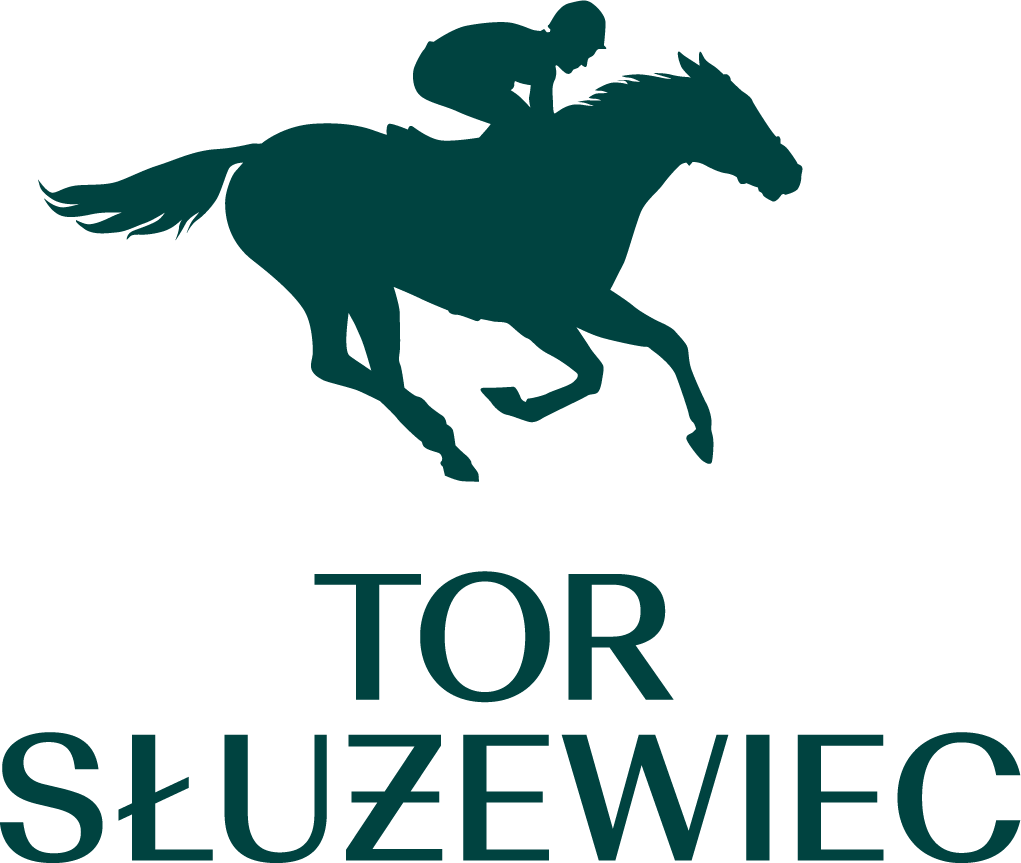HISTORY OF HORSE RACING
BEFORE THE SŁUŻEWIEC RACECOURSE WAS BUILT
We can give half our kingdom to the one who knows since when it was raced in Poland. According to the PWN New Universal Encyclopedia, racing is the oldest form of horse riding. So it can be assumed that our ancestors raced from the moment they got on the horse for the first time. However, they did it rather not for sport, but for hunting or in the heat of battle, when the rider’s skills and the speed of his horse could decide their life or death. One thing is certain – the need to race, despite of wars, uprisings and partitions never faded out in Poles, but on the contrary – it became ever greater.
THE FIRST CERTAIN DATE WHICH WE CAN DECLARE AS THE BEGINNING OF THE AGE OF DOCUMENTING EVENTS RELATED TO HORSE RACING IN POLAND IS 1777.
It was then that, on the way from Wola to Ujazdów, the mare belonging to Kazimierz Rzewuski defeated the horse of an English envoy, Sir Charles Whitworth.
It is this institution that has set itself the goal of organizing horse races and supporting the breeding of thoroughbred horses. The first races were held in June of the same year. At that time, the most appropriate place for this type of sport was Pole Mokotowskie (around today’s Square of Union of Lublin). This first circuit in the capital was about a kilometer long.
Horse racing, which fascinated the whole of Warsaw, was suspended with the outbreak of the January Uprising (1863-1864). However, neither this break, nor the repressions and the deprivation of the autonomy of the Kingdom of Poland resulted in a decline in the popularity of horse racing. Moreover, Polish horses were getting better every year.
THE POPULARITY OF RACING CONTINUED TO INCREASE, AND IT WAS SIGNIFICANTLY INCREASED BY THE OFFICIAL INTRODUCTION OF THE TOTALIZATOR IN 1880, THANKS TO WHICH THE PRIZES FOR THE WINNERS BACAME HIGH.
It is also important that trainers and riders from England, where this sport is on a highest level, started to come to Polish lands more and more often. This allowed us to learn from the masters. It can be said that it was a golden period for Polish horse racing, which was recognized by all over Europe.
The outbreak of World War I was another difficult period in the history of Polish horse breeding, and thus also racing. Fortunately, a large group of valuable horses survived safely in Odessa, from where they returned to the Polish tracks in 1919. However, many more years had to pass before we returned to the pre-war breeding level. The return to normalcy was favored by the entry into force of the law on horse racing (1925). It was thanks to her that the Horse Racing Committee could be established.
Meanwhile, on the wave of the extraordinary popularity of horse racing, new tracks began to be built, among others in Poznań, Lublin and Lviv. Even Zakopane had its seasonal racecourse, where you could race in winter. Warsaw residents also wanted to have their own real track. It was talked about more and more often and louder. We will come back to this issue later.
Another world war put an end to racing. Polish stud farms, known all over the world, were once again destroyed and our horses dispersed.
After the end of hostilities, the stud owners could not get them back, because they were nationalized. Worse, horses were also taken from private owners. In 1950, the very distinguished Society for the Encouragement of Horse Breeding was formally liquidated, probably as a “relic” of the bourgeois past. In this place, the government established the Państwowe Tory Wyścigów Konnych company, located in Służewiec with branches in Sopot and Wrocław. The systemic changes after 1989 brought another breakthrough. In a place of national stud farms, the officials established companies, some of which were privatized, in place of the former state studs. Thanks to this, competition between breeders, although not yet on a large scale, became a fact again.
But that was not the end of the changes. In 1993, Państwowe Tory Wyścigów Konnych, to which everyone had got used to it, was liquidated, and its property was transferred to the Agricultural Property Agency. A program of partial privatization of several areas related to horse racing, for example horse training, was prepared at that time. The company Służewiec – Tory Wyścigów Konnych in Warsaw was also established. This one-person company of the Agricultural Property Agency operated until 1999, in 2000 all shares were transferred to Totalizator Sportowy. The company could not spread its wings, because soon it was deprived the right to organize betting, so the earlier transfer of shares from a business point of view was pointless. And so the property of “Służewiec” was again owned by the state-owned enterprise. Meanwhile, in 2001, the law on horse racing was passed, which established the Polish Horse Racing Club, which start to manage the Służewiec racecourse.
THE HISTORY OF THE CREATION OF THE SŁUŻEWIEC TRACK
Let’s leave the calendar and go back to the races themselves in Warsaw. Until 1938 Pole Mokotowskie was still the center of the struggle of horses and their riders. It has been known for a long time that it is not quite a good place for this type of sports, but it was not until the 1920s that the need to build a track elsewhere became the subject of public discussion. As racing continued to grow in popularity, the need to move to larger, permanent facilities became more and more urgent.
On February 26, 1937, “Kurier Codzienny” wrote: So the current track, existing for over 50 years, no longer meets its requirements. There are no training tracks, the stands are in a deplorable condition, the stables are far behind in terms of modern equipment. On the other hand, the enormous amount of land in the heart of Warsaw, occupied by the track, makes it impossible to carry out any plans to regulate the city. Such arguments had to reach even the greatest opponents of change in the end.
The search for a suitable area for the Warsaw horse racing took many years. Various locations were taken into account, including the area in Okęcie, but Służewiec turned out to be far the best proposition. One of the reasons for purchasing this land was its excellent location.
THE FIRST IMPORTANT DATE IN THE HISTORY OF THE SŁUŻEWIECKIE TRACK WAS 1926, WHEN THE SOCIETY FOR THE ENCOURAGING OF HORSE BREEDING IN POLAND PURCHASED 150 ha OF LAND IN SŁUŻEWIEC FOR FUTURE FACILITIES OF THE HORSE RACECOURSE COMPLEX.
PLN 590,000 was spent for this purpose. From that moment, almost every day, the press informed about the progress of work, about the next workers arriving at the construction site, communication to Służewiec, etc. There was a lot of talk about the architectural design, and then the move from Pole Mokotowskie.
THE NEXT VERY IMPORTANT DATE, MAY BE THE MOST IMPORTANT, IS CERTAINLY ON JUNE 3, 1939, WHEN THE FIRST RACE WAS HELD ON THE BEAUTIFUL AND EXTREMELY MODERN SŁUŻEWIEC RACETRACK.
Unfortunately, only three month later, the World War II broke out…
What happen with the Służewiec Racecourse during the war? Fortunately, it did not suffer so much that it was completely impossible to organize races. The Germans themselves prevented it, because the SS troops were stationed in this area. Varsovians heard the sound of horse hooves again in 1946. At that time, 237 races were held, with over 160 horses participating.
THE “RACING TOWN”
Before he started designing, Zygmunt Plater-Zyberk, the main architect of Służewiec, visited all the best European racecourses. Thanks to this, on the one hand, errors in the design phase were avoided, and on the other hand, the latest technical solutions were used.
Taking into account all the terrain conditions, it was decided the racecourse (2,300 m) will be located from the north to the south, and the training track – from the east to the west (approx. 30 ha). Let us add that the main racecourse was built in such a way that water could not accumulate on it. Its shape (curves) was a dream for purebred “athletes”, whcih are Thoroughbreds.
It was planned to build three tribunes for visitors of various financial resources. The first one (called the “Membership Tribune”) was intended for the most important people. Its guests had at their disposal a spacious hall, a hall and a small lounge with a dining room on the first floor. This tribune is connected by an open colonnade with the “Small Tribune” for the staff. On the floor above, there were rooms for, among others, judges. The meeting room was also located here. This building could be reached by car (with a separate entrance). In turn, the second tribune, the “Main Tribune”, could accommodate as many as 5,400 people (there were both sitting and standing places). Guests of this place could also use the hall on the ground floor. People in both of mentioned building had access to the paddock that was situated between them. The cheapest places were on the unfinished Third Tribune, which could seat up to 7,000 people (there were only standing places).
The whole complex had many architecturally interesting solutions, for example the underground tunnel between the stable area and the paddock. Artificial track sprinkling was also considered. If we add flats for employees, warehouses (including a grain silo for 550 tons of grain), stables for over 800 horses, wells, a large parking lot, a water tower, it will probably come as no surprise that this bold project was called “the racing town” during the construction phase. It should also be remembered that in those years the Służewiec track was the largest facility of this type in whole Europe. But the whole complex would not be so attractive if it were not for the ubiquitous greenery. It is hard to believe that this area, situated in the middle of Warsaw, is a habitat of as many as 6,000 different shrubs and 95 species of trees.
According to the chief architect, 12,000 m3 of concrete, 85 m3 of planks and 1,000 tons of iron were used for the construction. And that’s not all, because there is also a concrete wall (approx. 6 km), ceilings, plaster and much more.
And What is the Służewiec hippodrome, which was established between the following streets: Puławska, Wyścigowa, Bokserska, Kłobucka and Wyczółki (formerly Gallop)? In the opinion of the vast majority of visitors, it is a pearl of European and World “hippic architecture” – if you can put it this way. It is not only the architecture of individual buildings amazing, as well as their functionality (difficult to overestimate even nowadays), but also greenery, making this place a sports and recreational facility. Our “racing town” can still be an example for the next generations of horse racecourse designers.
LITERATURE
“Bomba w górę! 166 lat wyścigów konnych w Warszawie.” The guidebook published in 2007 by the Wola Museum, a branch of the Historical Museum of the Capital City of Warsaw, as well as the Polish Horse Racing Club on the occasion of the opening of the exhibition under the same title. Authors: Jerzy Budny, Karol Mórawski, Agnieszka Dąbrowska and Maria Tejchman.
“To już 150 lat!” Guidebook published by the Państwowe Tory Wyścigów Konnych on the occasion of the 150th anniversary of the first race. Author: Zdzisław Umiński.

